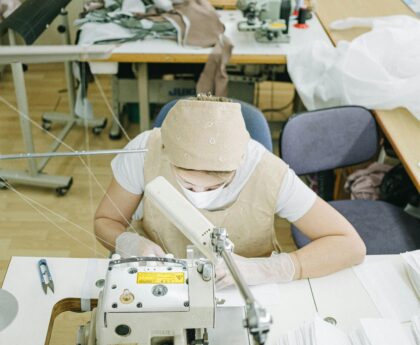Introduction
The laptop bag industry has evolved significantly, blending functionality with aesthetics to cater to professionals, students, and travellers. With the increasing demand for stylish, durable, and ergonomic laptop bags, manufacturers are innovating to meet customer expectations. This guide explores the key aspects of laptop bag manufacturing, from material selection to production processes and market trends.
Market Overview

The global laptop bag market has witnessed steady growth due to the increasing number of remote workers, students, and business travellers. Manufacturers cater to various segments, including budget-friendly, mid-range, and premium categories. Brands also emphasize sustainability by incorporating eco-friendly materials and responsible manufacturing practices.
Key Materials Used in Laptop Bag Manufacturing
The choice of materials significantly impacts the durability, weight, and aesthetics of laptop bags. Common materials include:
- Polyester: Lightweight, durable, and water-resistant, polyester is widely used for laptop bags.
- Nylon: Known for its high tensile strength and resistance to abrasion, nylon ensures longevity.
- Canvas: A natural, sturdy fabric that offers a classic look and is often used in high-end laptop bags.
- Leather: Found in premium bags, leather provides sophistication but requires regular maintenance.
- Eco-friendly materials: Manufacturers increasingly use recycled PET fabrics and organic cotton to promote sustainability.
Manufacturing Process
The production of laptop bags involves several intricate steps to ensure quality and durability. The process includes:
- Design & Prototyping
Manufacturers collaborate with designers to create innovative laptop bag designs. Prototyping allows testing of various features such as compartments, padding, and zippers before mass production.
- Material Cutting
Once the design is finalized, materials are cut into specific shapes using automated cutting machines or manual methods. Precision in cutting ensures minimal wastage and consistency in production.
- Stitching & Assembly
Experienced workers stitch the fabric panels together using high-quality threads. Reinforcement techniques such as double-stitching and bar-tacking enhance durability. Pockets, zippers, straps, and padding are also attached during this stage.
- Quality Inspection
Each bag undergoes rigorous quality checks to ensure durability, proper stitching, and smooth functionality of zippers and straps. Any defective items are discarded or sent for rework.
- Branding & Packaging
Logos and brand tags are added using embroidery, heat transfer, or screen printing techniques. Finally, the bags are packed and prepared for distribution.
Key Features of a High-Quality Laptop Bag
- Ergonomic Design: Proper back support, padded straps, and weight distribution to ensure comfort.
- Multiple Compartments: Organized storage for laptops, chargers, notebooks, and accessories.
- Water Resistance: Protection against rain and accidental spills.
- Lightweight Material: Ensures ease of carrying without unnecessary bulk.
- Anti-Theft Features: RFID-blocking pockets and hidden zippers for security.
- Durability: High-quality zippers, reinforced stitching, and robust materials for extended use.
Trends in Laptop Bag Manufacturing
- Smart Bags: Integration of USB charging ports, anti-theft zippers, and tracking devices.
- Sustainable Manufacturing: Use of recycled and biodegradable materials to reduce environmental impact.
- Customization: Personalized prints, monograms, and colours options for a unique appeal.
- Lightweight & Minimalist Designs: Catering to professionals and students who prefer sleek, functional bags.
- Convertible Bags: Designs that transition between backpacks, messenger bags, and tote bags for versatile use.
Challenges in the Laptop Bag Industry
- High Competition: Numerous brands compete, making differentiation crucial.
- Cost Management: Balancing quality and affordability without compromising durability.
- Supply Chain Disruptions: Delays in raw material sourcing can impact production timelines.
- Counterfeit Products: The rise of counterfeit brands affects the market for authentic manufacturers.
- Sustainability Compliance: Meeting environmental regulations while maintaining profitability.
Conclusion
The laptop bag manufacturing industry continues to evolve, driven by innovation, sustainability, and ergonomic advancements. As consumer preferences shift towards eco-friendly and multifunctional designs, manufacturers must adapt to stay competitive. By
focusing on quality materials, efficient production processes, and market trends, laptop bag manufacturers can ensure long-term success in this dynamic industry.





